Tank Interconnections
June 17, 2015
The tanks are all connected down below so they act as one big tank. Each tank can be isolated for cleaning or in case of failures. The plan was to use 3" Aquapex piping for the serial connections so that it could handle any shifting.. but then we learned that 3" Aquapex has an inner diameter of 2.5".. Then we learned that even 2" Aquapex would run us about $6000 in materials.. and 3" would be way more than that.. so we decided to downsize and go with 2" PVC. Hopefully we didn't make a huge mistake... the PVC puts us at risk of springing leaks if the ground shifts, and the smaller diameter puts us at risk of losing water if the inlet tanks fill so fast that the serial connections can't equalize it fast enough. Both are edge cases that hopefully we won't encounter.
It took a few weeks to get the connections solid.. After the connections were initially installed, we ordered 2200 gallons of water to settle in to the tanks and watch for leaks. There were a few iterations of leaks and fixes and then Rob decided to install pipe unions. I'm not sure exactly why they were needed.. nor am I 100% sure they fixed the problem. At this point, it rained alot and so the ground never fully dried out to check for leaks to my satisfaction and then Rob filled around the pipes with crusher fines. I'm a little uneasy about this... This is an important part of the project to not have a problem with and I don't have that 'final polished' feeling that I should have.
Rob had an idea to install elbows inside the tanks to bring the outlet to the interconnection lower into the tank so we can access more water. There were two reasons to not do this. The first was that since the tank have ribs, we wouldn't gain access to that much more water since the interconnection bulkhead is just barely above the rib anyhow. The second was that it would actually require more water to equalize the tanks than if we just had no elbow at all. We discovered via a little experiment in the kitchen that if there is air in the level section of pipe and both ends are submerged in water thanks to the elbow in each tank, the water level in the tank being filled will apparently actually have to rise above the level of the straight pipe in order to create enough water pressure to force the air through. So instead of helping, the elbows will actually trap air bubbles and inhibit water flow.
Rushing to deal with the rain is a bad idea.. it's not like it got us anywhere useful, anyhow.
Exploring and experimenting, while slowing down the process, has been valuable in helping avoid regrets.
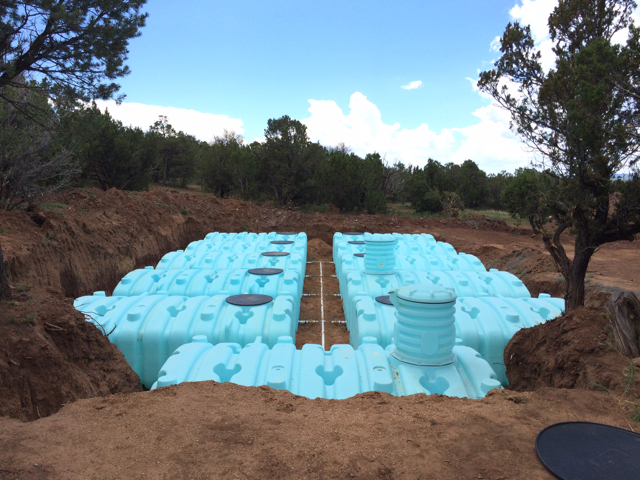

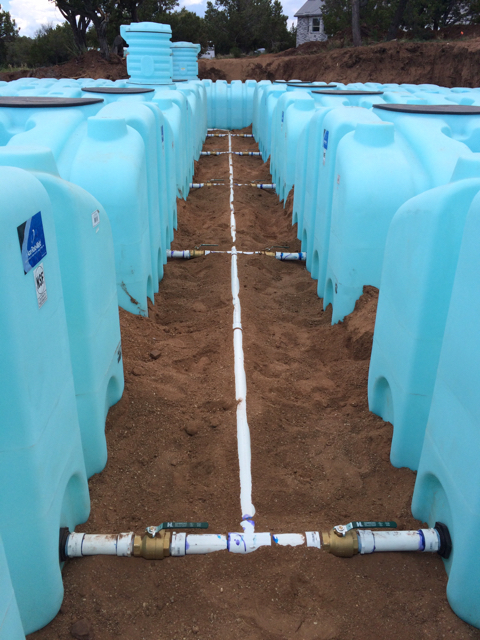
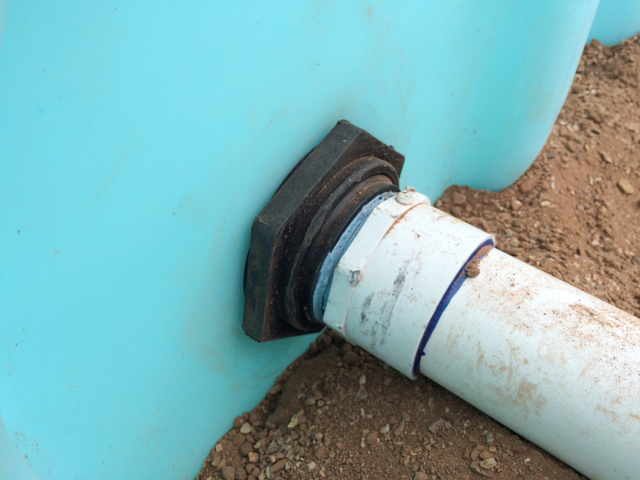
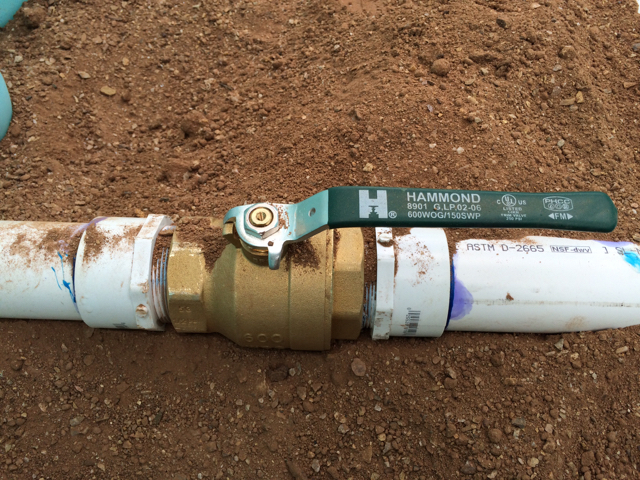
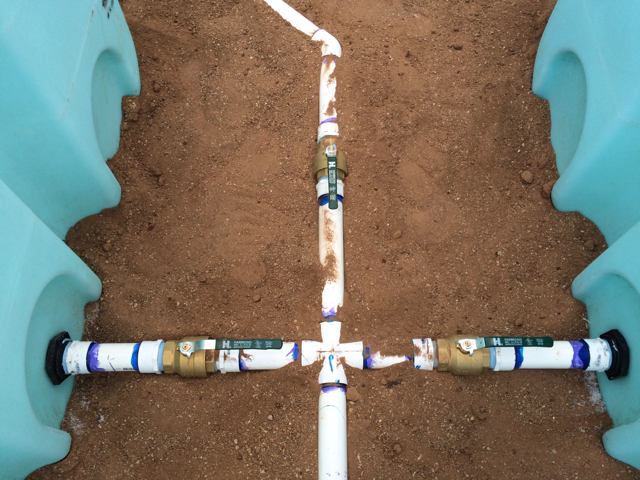
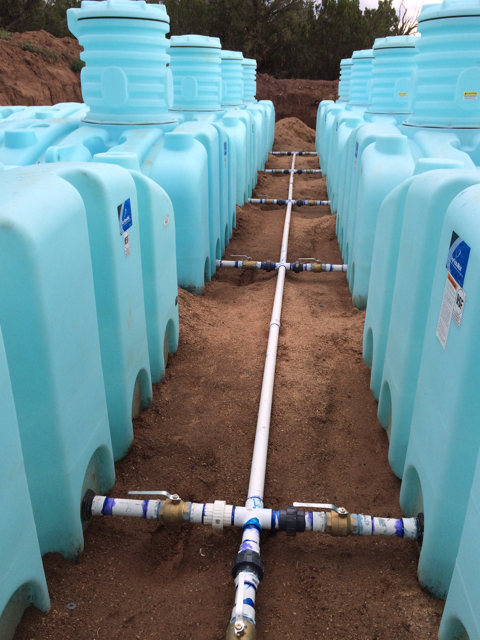
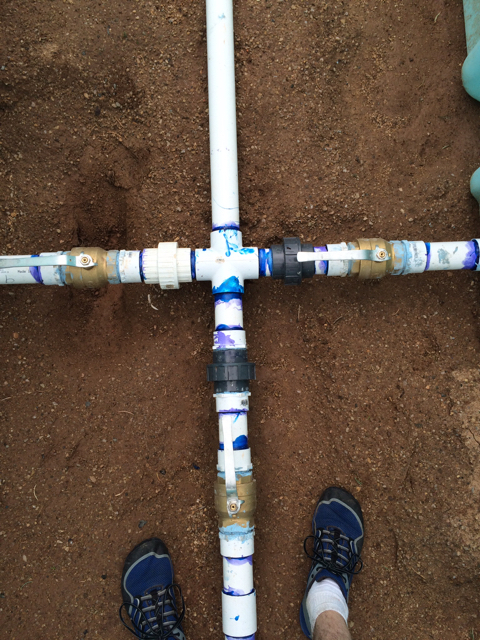
| Description | Cost |
| Labor | $1500 |
| Pipe, valves, tank adapters | $2202 |
| Unions for pipes | $180 |
| Total | $3882 |